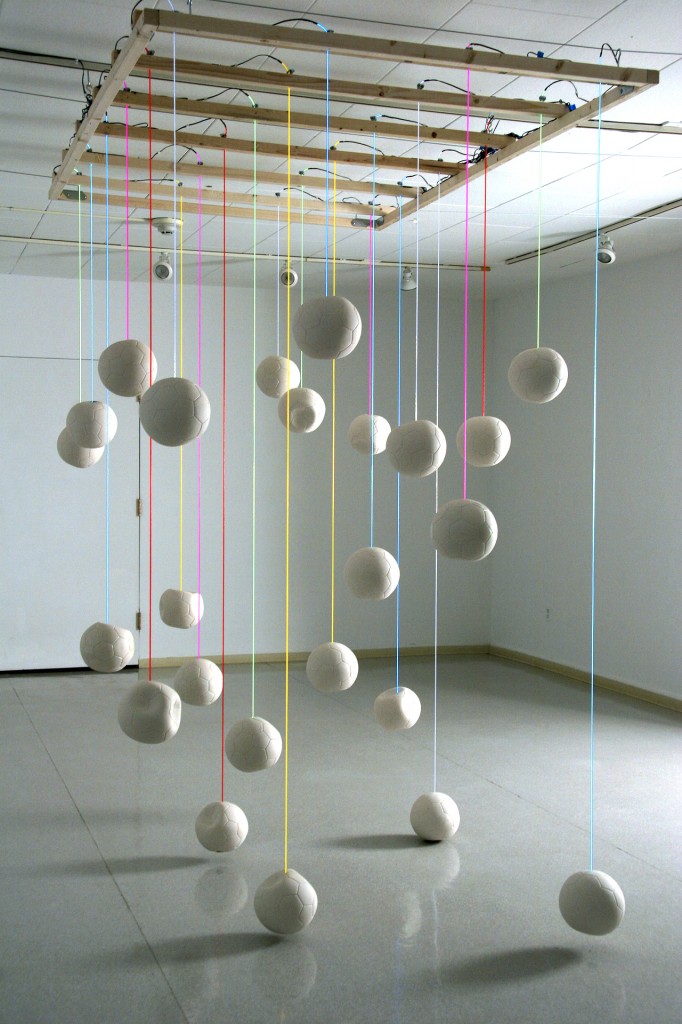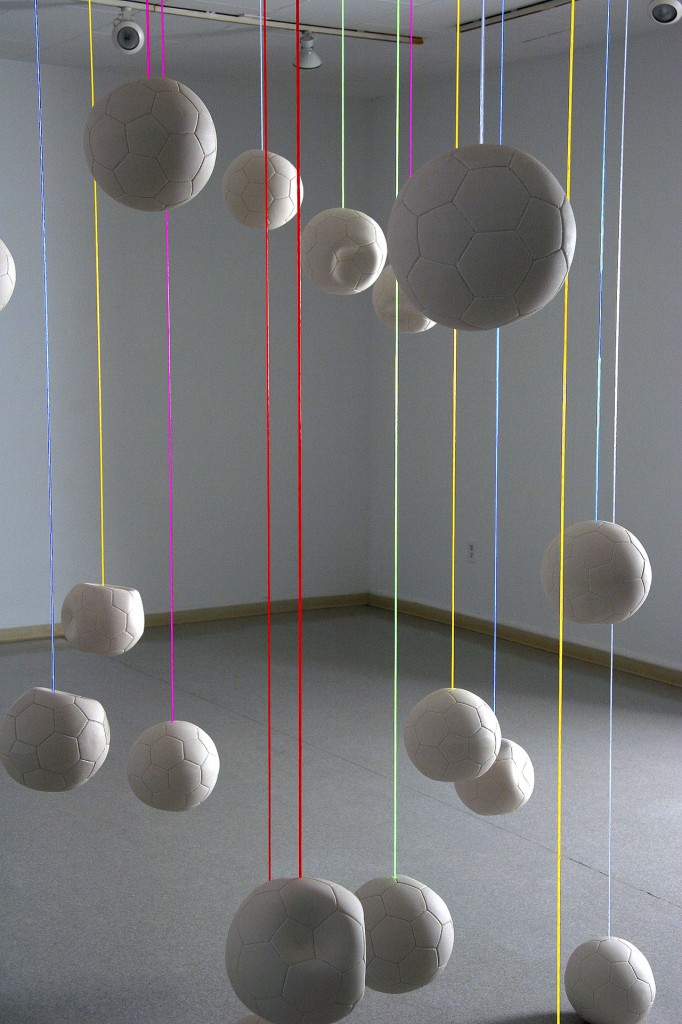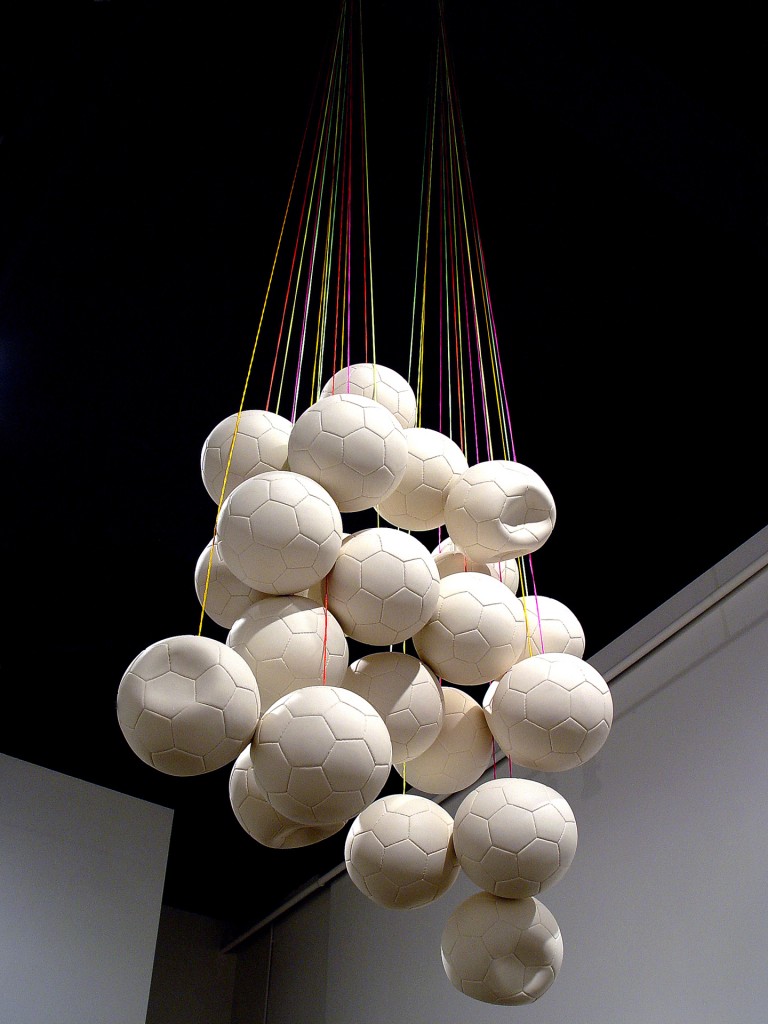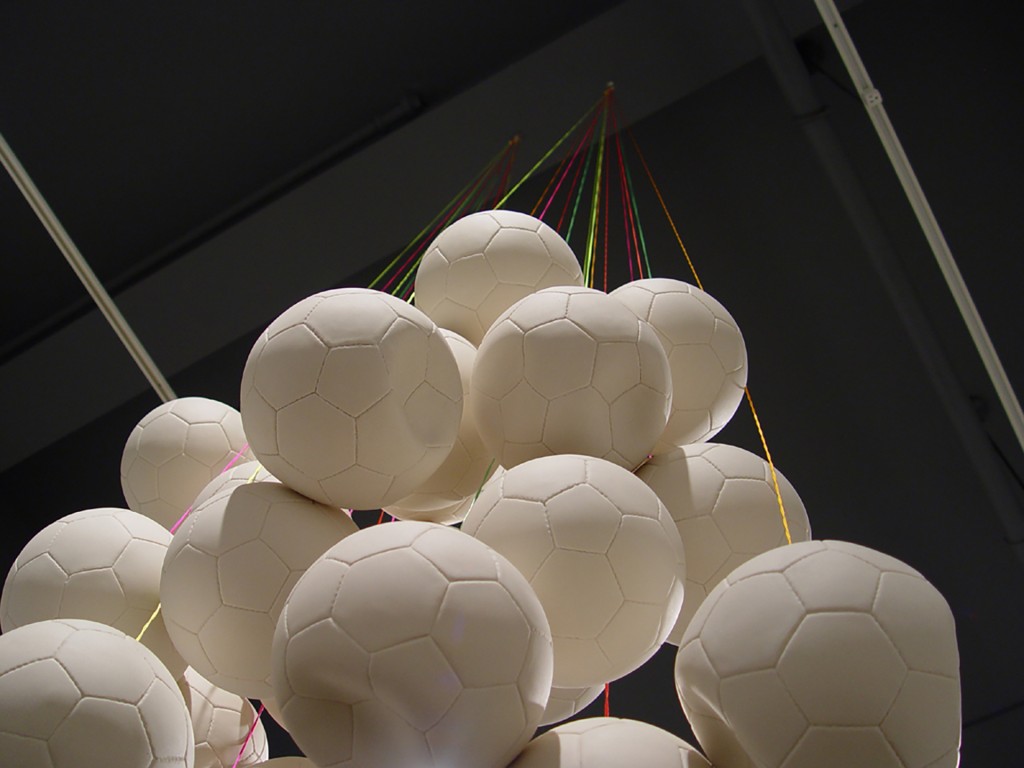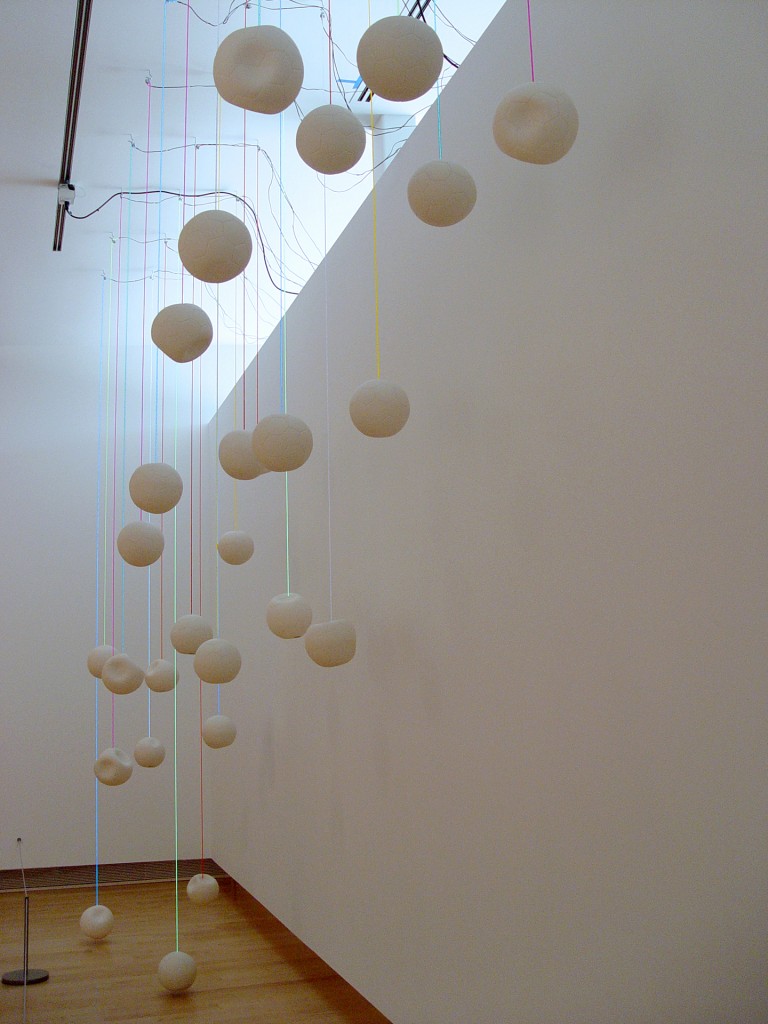Dream 2005-2008
Dream Suspended, 2006
Porcelain, electroluminescent wire, ac driver, wood
88(h) x 156(w) x 108(d) in
The Dream project is a deeply personal work that acknowledges the premature death of my brother at the age of 36. I was inspired by my brother’s passion for engagement and teaching to young children as a soccer coach in Shikoku Island, Japan. Many boys and girls from my hometown dream of becoming a professional soccer player. Hanging suspended in time and space are fragile porcelain soccer balls, all of which are at different stages of deflation. Each ball represents the dream of my brother as well as that of those young children from Shikoku.
Sharing its inspiration with Dream (2005) described above, this site–specific installation was created for a solo show at Howard House Contemporary Art Gallery (Seattle, WA). Between 2006–2009, this work was exhibited across the US in venues such as Kittredge Gallery, Peeler Art Center (DePauw University, Greencastle, IN), Tacoma Art Museum (Tacoma, WA), Black and White Gallery (Brooklyn, NY), All Nations Cup (Starfire Sports Complex, Tukwila, WA) and Dan & Gail Cannon Gallery (Western Oregon University, Monmouth, OR).
The Dreamプロジェクトは、36歳で突然死した兄のことを思い制作した、個人的な作品です。四国で兄はサッカーのコーチを12年間ボランティアでしていました。残された手帳には子供たちすべての誕生日が記載されていて、彼らの誕生日を祝い、車を持たなかったり、仕事で忙しい親に代わり、子供達の遠征の送り迎えや差し入れなど、献身的であった。私の故郷の多くの子供達にとって、プロのサッカー選手になることは、小さな町での生活から抜け出すための夢物語なのである。ギャラリーに吊るされているのは、壊れやすいポーセリンのサッカーボールで、ところどころに凹みがあります。庭で数年置き去りにされていたサッカーボールを石膏で型取り、その中に泥漿と呼ばれる液体の土を流し込む。しばらくして、泥漿を流し出し少し時間を置きます。その間、石膏が水分を吸収し、中に薄い土の皮膜が残りる。石膏型を外し豆腐のように柔らかいサッカーボール(中は空洞)を緩く手のひらで押すとボールが凹む。それぞれのボールには、私の兄の夢と、四国の少年たちの夢が込められている。彼らにとってサッカーボールは地球儀のようなものである。 命のように儚い土のサッカーボールは、世界中に散らばり、それぞれが旅をして、見る人を結びつけ、文化を超えて語り合うことになるであろう。
by gary owen
Hailing from a maritime town in rural Japan, Nakamura’s childhood was delineated by the seashore of her small island. On land she schooled, ate dinners with her family, grew tall with her brother. Beyond the lapping line of the sea was someplace else. Lines, boundaries and islands are recurring motifs in Nakamura’s ceramic sculpture, a way of investigating issues of place, provincialism and identity as shaped by nativity.
Nakamura left her idyllic setting to attend university in Tokyo, where she studied Ceramics. Leaving a rural childhood for the big city is a mind trip. Nakamura’s frame of reference broadened. While Nakamura chose to leave her isolated life on Shikoku, her brother, a soccer coach, chose to stay. Dream Suspended features 36 fragile porcelain soccer balls hanging from the ceiling, an elegy to his premature death at age 36.
The soccer balls in Dream Suspended relate formally to Nakamura’s interest in islands. The ball is like a little globe, and the stitching defines little islands on its surface. Drawing out this metaphor, a professional soccer career is the dream of escape for the young boys in Nakamura’s hometown, a way to move beyond the sea encircling their island, see the world. In Nakamura’s treatment, the soccer ball becomes a universal signifier of aspiration. Nakamura’s brother chose to stay behind to train young boys at soccer so that they might make it big. Nakamura mourned his death by making frequent trips home to observe a year-long Buddhist rite of mourning. Dream Suspended publicly celebrates her brother’s lifelong goal of encouraging children to pursue their dreams beyond the horizon.

